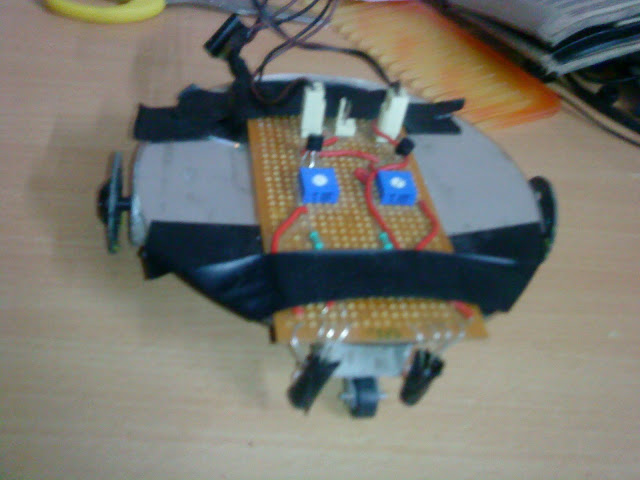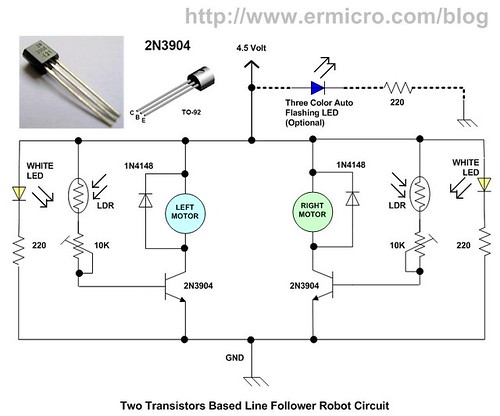electronicsIdiot
Junior Member level 1
My First Robot 2 transistor based line follower

completed by following ermicro website but it works when battery weight is not added to it i.e. battery on hands and make it offload.
I also made a two 555 timer based siren.
I want to know how these circuit works.Do i need to apply kvl, kcl and Network Analysis :shock: on them
what i know at this time is:
for robot
Transistor amplify(by beta 100 for 2N3904 and 800 for 2N2222) the base input(if it enough to get amplified) from LDR then motor will start rotating and potentiometer are speed controller.
and also transistor are in linear region as stated in blog
and the base act as a valve
circuit:

for siren
**broken link removed**
exact circuit link is lost but the timer have a trimpot of 10k and 100 k,but my question is for any kind of circuit
555 timers works in astable multivibrator
and RC network gives time delays as well as different frequency(fall on sound frequency).
i noticed one(timer+potentiometer) is for frequency and one for periodicity.
mathematicallly it is a time constant.
and the siren makes funny sound
I can make circuit to be exist in real world
but don't know how to design by myself.
completed by following ermicro website but it works when battery weight is not added to it i.e. battery on hands and make it offload.
I also made a two 555 timer based siren.
I want to know how these circuit works.Do i need to apply kvl, kcl and Network Analysis :shock: on them
what i know at this time is:
for robot
Transistor amplify(by beta 100 for 2N3904 and 800 for 2N2222) the base input(if it enough to get amplified) from LDR then motor will start rotating and potentiometer are speed controller.
and also transistor are in linear region as stated in blog
and the base act as a valve
circuit:

for siren
**broken link removed**
exact circuit link is lost but the timer have a trimpot of 10k and 100 k,but my question is for any kind of circuit
555 timers works in astable multivibrator
and RC network gives time delays as well as different frequency(fall on sound frequency).
i noticed one(timer+potentiometer) is for frequency and one for periodicity.
mathematicallly it is a time constant.
and the siren makes funny sound
I can make circuit to be exist in real world
but don't know how to design by myself.
Last edited: